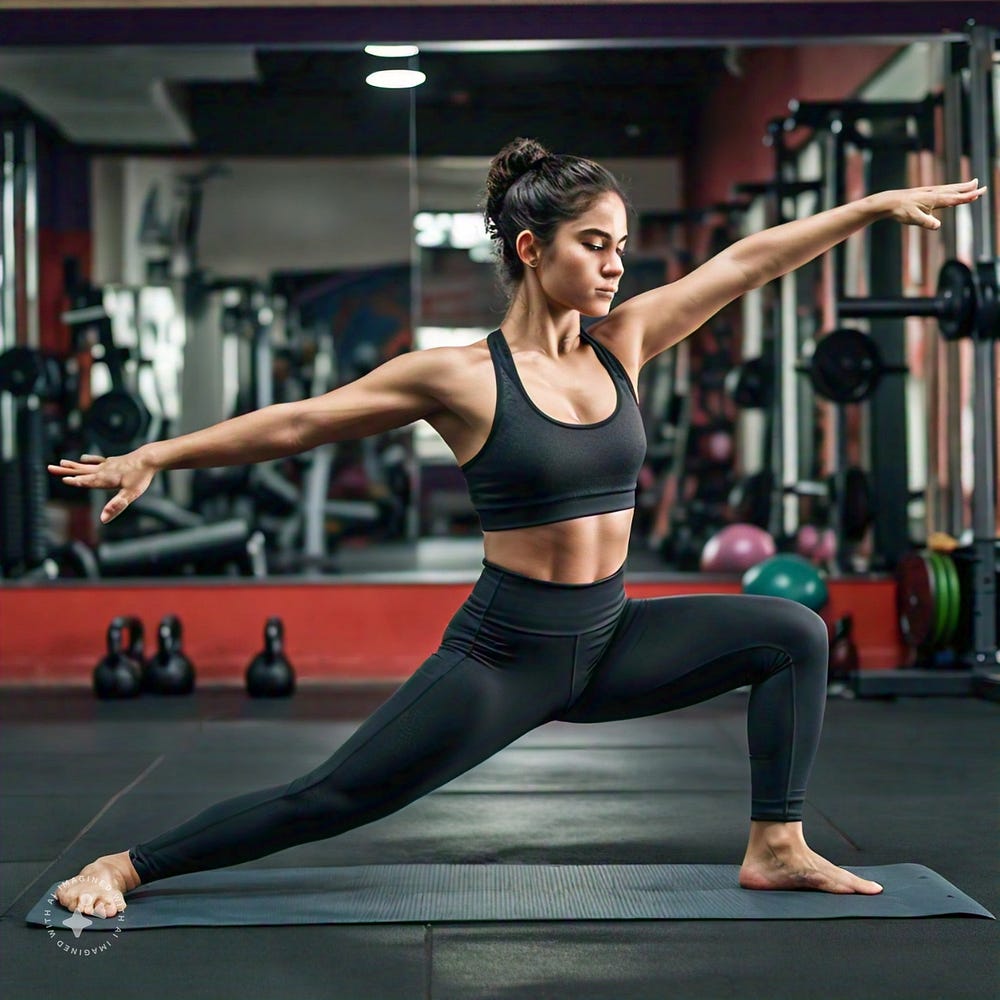💪✨How to Build a Balanced Fitness Plan

Creating a balanced fitness plan can feel like assembling a jigsaw puzzle — there are multiple pieces to consider, and they all need to fit together just right. However, once you learn the basics of each element, you’ll have the blueprint to create a comprehensive plan that builds strength, enhances endurance, increases flexibility, and boosts mobility. So let’s dive into crafting a well-rounded fitness plan that will keep you strong, fit, and agile.
Step 1: Setting the Foundation — Defining Goals 🎯

Before you dive into any exercise program, it’s essential to define your fitness goals. Are you looking to build muscle? Improve cardiovascular health? Enhance flexibility? Knowing where you want to go helps guide how you’ll get there. Here are a few tips on setting goals that will keep you motivated and focused:
- Specificity: Instead of saying, “I want to be fit,” clarify what that means. For example, “I want to be able to run a 5K,” or “I want to lift 100 pounds.”
- Measurability: Aim for progress markers. Tracking your endurance, flexibility, and strength gains will help you stay motivated.
- Realism: Be honest with your starting point and avoid setting goals too far out of reach, like doubling your strength in two weeks.
Now, with a solid goal in place, you’re ready to begin piecing together your workout routine. Let’s start with the building blocks!
Step 2: Strength Training — Building a Solid Core 💪

Strength training is crucial for maintaining muscle mass, boosting metabolism, and supporting your body in daily activities. And no, you don’t need a gym membership or heavy weights to get started. Simple bodyweight exercises or resistance bands can do the trick, especially for beginners. Here’s how to set up a weekly strength training routine:
- Frequency: Aim for two to three days per week.
- Exercise Selection: Start with full-body movements like squats, lunges, push-ups, and planks. These exercises engage multiple muscle groups and burn more calories.
- Intensity: Begin with 10–15 reps of each exercise for 2–3 sets. If you’re new to strength training, bodyweight exercises or light resistance are ideal.
Pro Tip: The magic in strength training is progressive overload. Gradually increasing the weight or resistance level as you progress will lead to noticeable improvements in strength and muscle tone.
Step 3: Endurance Training — Building Your Stamina 🏃♀️

Endurance training, commonly referred to as cardio, is essential for heart health and overall stamina. Activities that increase your heart rate, like jogging, cycling, or swimming, improve your body’s ability to use oxygen efficiently and give you more energy throughout the day. To create a balanced cardio routine:
- Frequency: Aim for 150 minutes of moderate-intensity cardio or 75 minutes of vigorous cardio weekly. Break it down into manageable sessions like 20–30 minutes, three to five times a week.
- Intensity: Use the “talk test.” If you can chat comfortably, you’re at moderate intensity. If speaking full sentences is challenging, you’re at a vigorous intensity.
- Variation: Mix it up! Try HIIT (High-Intensity Interval Training) for shorter, intense bursts, or low-intensity steady-state (LISS) cardio for longer, sustained efforts.
Pro Tip: Endurance doesn’t just help with physical stamina but also mental endurance. Regular cardio has been shown to improve mood and mental clarity.
Step 4: Flexibility Training — Enhance Your Range of Motion 🤸♀️

Flexibility might not be as glamorous as strength or endurance training, but it plays a critical role in injury prevention and overall comfort in movement. As muscles get stronger, they often get tighter. To keep them limber and agile, you’ll want to add some stretching exercises to your routine:
- Frequency: At least 10–15 minutes post-workout or on rest days.
- Exercise Selection: Focus on major muscle groups. Stretch your hamstrings, calves, chest, shoulders, and hip flexors. Yoga routines or static stretches can work wonders for flexibility.
- Intensity: Aim for a gentle stretch. Hold each stretch for 15–30 seconds, breathing deeply to help relax the muscles.
Pro Tip: Incorporate dynamic stretching (moving stretches) as part of your warm-up and static stretching (holding a stretch) for your cooldown. This way, your muscles are prepared for the workout ahead and then released from tension after exercise.
Step 5: Mobility Training — Keeping Your Body Functional 🧘♂️

Mobility is often confused with flexibility, but it’s actually different. While flexibility is about muscle stretch, mobility involves moving through the full range of motion with control and strength. Good mobility means you can perform exercises with proper form and reduce the risk of injury. Here’s how to keep mobility in check:
- Frequency: Ideally, a few minutes daily, especially for joints like hips, shoulders, and ankles.
- Exercise Selection: Incorporate exercises like hip openers, shoulder circles, and spine twists. Foam rolling is also helpful for myofascial release, which can improve mobility over time.
- Intensity: Perform each movement slowly, focusing on control rather than speed.
Pro Tip: Incorporate mobility exercises at the beginning of your workout to help warm up joints. Think of mobility as the oil that keeps the gears of your body turning smoothly.
Step 6: Recovery — Rest, Restore, and Recharge 🛌

Recovery is often an overlooked aspect of a balanced fitness plan. It’s during rest that your muscles repair and grow, and your body adapts to the demands you’ve placed on it. Here’s how to incorporate rest without losing momentum:
- Active Rest: Light activities like walking, gentle stretching, or yoga can promote blood flow without taxing your muscles.
- Rest Days: Aim for at least one or two rest days each week. These days give your muscles time to recover fully.
- Sleep: Never underestimate the power of sleep. Aim for 7–9 hours each night, as your body performs essential repair functions during deep sleep.
Pro Tip: Tracking rest and recovery can help you avoid burnout. Use a fitness app or journal to log rest days and note how you feel.
Step 7: Putting It All Together — Your Weekly Plan 📅

Now that you understand each fitness element, let’s see how it looks as a balanced weekly plan:
- Monday: Strength Training (Full Body)
- Tuesday: Cardio (Moderate Intensity)
- Wednesday: Flexibility + Mobility Session
- Thursday: Strength Training (Lower Body Focus)
- Friday: Cardio (High Intensity or Interval Training)
- Saturday: Strength Training (Upper Body Focus)
- Sunday: Active Recovery (Stretching or Light Yoga)
This weekly schedule ensures that you’re hitting each fitness component, building a balanced routine that’s sustainable and effective.
Discover the Nature’s Secret to Accelerating Weight Loss — Click Here to Learn More
Final Thoughts: Keeping It Fun and Sustainable 🎉
A balanced fitness plan should be both enjoyable and adaptable to your lifestyle. Try different activities to keep things fresh, whether it’s dancing, hiking, or swimming. This variety can prevent boredom and keep you engaged over the long haul. Remember, the ultimate goal is to create a routine that supports your health, fitness, and happiness.
By following these steps, you’re not just building a balanced fitness plan — you’re creating a healthier, stronger, and more resilient you. Get ready to enjoy the journey! 🌟
Click Here to Claim Your Free Bonus of Refreshing Tea Remedies
Comments
Post a Comment